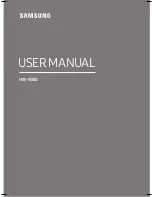
Pre-wiring
8
Pre-wiring generally occurs after framing, plumbing and electrical installation and must occur before drywall
installation prevents access to the wall cavities.
Special tools
In addition to all the standard electrician’s tools, home theater installation requires the following:
• Cat 5 Cable stripper/crimper
• RCA Connector stripper/crimper
• RG6 Coax stripper
• ‘F’ Connector crimper
• Cable testers for Cat 5 and RG6
Notes for pre-wiring
1. Documentation.
Confirm that you have the wiring plan, wire list and parts list that you created in the planning stage.
2. Home run wiring.
Except as noted, all wiring is “home run,” connecting remote equipment directly to the main System Rack.
Except as noted, there is no “daisy-chaining” of system components.
3. Service loops.
During installation, you will position the System Rack outside the wall, connect all cables and insert the rack into
place. For this reason, you must provide a substantial service loop of slack cable. We recommend a five-foot service loop for all
cables at the System Rack, and a two-foot service loop at all other locations.
4. Avoiding AC wires and junction boxes.
As usual, do not run low-voltage wires through the same drill holes as AC wires. Do not
place low-voltage wall plates and in-wall control panels in the same junction boxes as AC. In addition to all the usual safety
considerations, AC wires radiate 60-Hz “hum” and switching transients that can degrade system performance. Where low-voltage
cables run parallel to AC wires for more than five feet, maintain two feet minimum separation. Where low-voltage cables cross AC
wires, they should do so at a 90-degree (right) angle, to minimize hum.
5. Cable labels.
Both ends of all cables should be labeled according to their designations in the wire list. This will prevent confusion
and time-consuming wire tracing during the installation. It will also expedite any service calls or additional installations in the future.
6. Protecting plugs and connectors.
Your pre-wiring will be followed by wallboard installation, plastering, priming, painting,
wallpapering, floor installation and floor finishing. These potentially messy processes can ruin your cable connectors with plaster,
paint, dust and other contaminants. To save yourself work later on, protect your cables ends with clear plastic wrap. Protect your
cables by coiling the service loops back into wall openings and junction boxes.











































